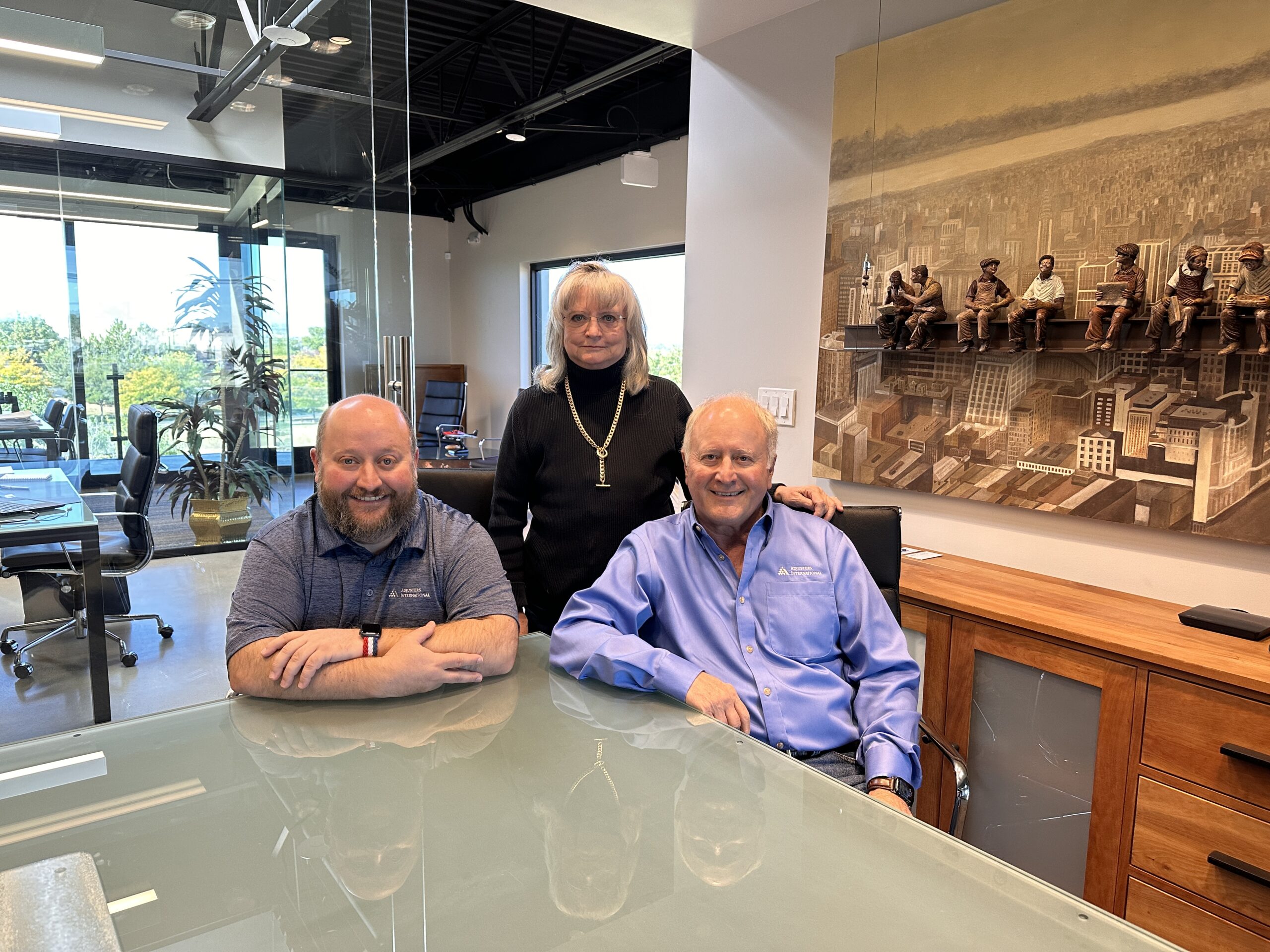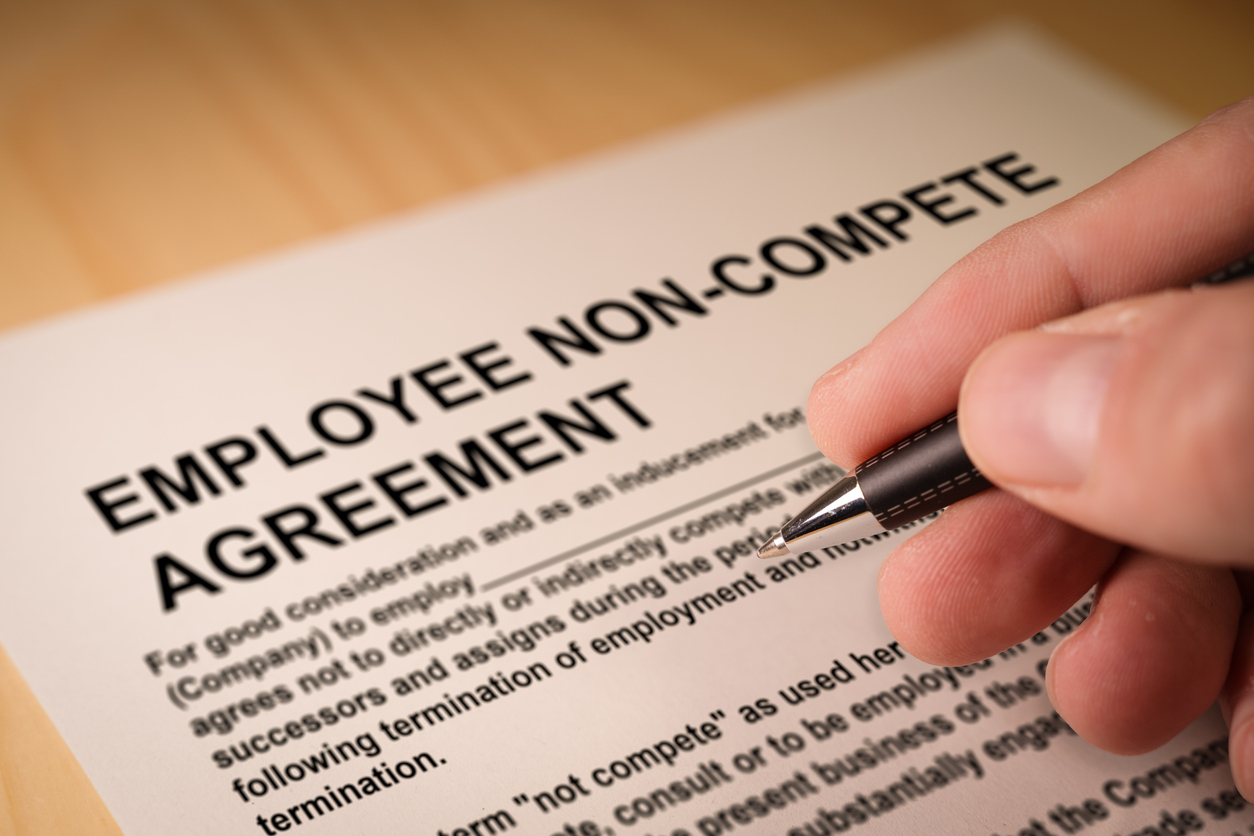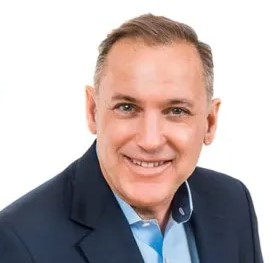In my meetings and times with Scott and Jan deLuise, it’s clear that they make quite the dynamic duo. While Jan tends to stay more in the background, Scott consistently uses the pronoun “we” when discussing his life and business ventures. Having had the opportunity to speak with Jan separately over the years, I understand why Scott emphasizes this collective “we.” In fact, I believe that many of us, including myself and my fellow colleagues, could benefit from adopting this inclusive mindset.
The deLuise family embodies the spirit of Colorado. Jan speaks with immense pride about Scott’s expertise as a racing skier, and their conversations often revolve around their shared love for the mountains and the great outdoors. Scott proudly boasts of being a fifth-generation Coloradan, while Jan is a fourth-generation native. Scott, Jan, and their son Kalon are alumni of Colorado universities. They attribute a portion of their success to their deep roots in Colorado, with family ties that span over a century.
While Scott holds an MBA, he beams with pride when talking about Kalon, who achieved the title of Certified Public Accountant and joined the ranks of the public adjuster practice. It’s impossible to spend time with these three individuals and not sense the genuine closeness that permeates the deLuise family.
What started you into a career in public adjusting, and how has it evolved?
In November 1985, I was on the board of my fraternity house in Boulder and received a call early one morning from our attorney. An arsonist had broken in and started a fire, along with five other fraternities along the front range. Fortunately, my brothers and all the others escaped unharmed. However, our house was left uninhabitable. I served on the house board along with others, including one who was an insurance broker and another who was an attorney, all representing the Fraternity in various matters. Our attorney told me he was filing an insurance claim, and because of my background in the commercial real estate business and knowledge of construction, he asked me to handle the claim. At that time, I knew absolutely nothing about insurance, and none of us on the board did. While our insurance broker was a brother, he asked me to handle it to avoid any conflicts.
About two weeks later, I met our adjuster at the house, and about a week after that, during sub-zero weather in Boulder, we had another break-in, a second fire caused by a homeless person, and this one nearly burned the place down. Facing two fires and navigating the insurance claim process on my own was quite overwhelming. Fortunately, luck was on my side as I received calls from four public adjusters (PAs) from around the country. After some consideration, I decided to interview two of them and ultimately hired one, Bill Ibur. I shadowed him throughout the process, and I must admit, I fell in love with the business. Bill managed to get our losses settled within 60 days, securing double the policy limits. This experience taught me the importance of expertise in insurance claims, especially in challenging situations like property damage due to fires. It was a turning point in my understanding of insurance, and it set me on a path a few years later that ultimately led to a career advocating for policyholders’ rights.
In 1990, Denver experienced a severe hailstorm that unleashed hail ranging from golf ball to baseball size. Bill Ibur, who had previously assisted with the fraternity fire insurance claim, approached us with an intriguing proposition: to partner with him and tackle the challenges posed by this hailstorm. This marked the inception of our first public adjuster partnership. Jan and I began our public adjuster venture right in our kitchen in Golden.
Leveraging my connections within the real estate industry, we quickly found ourselves inundated with more business than we initially anticipated. In response to the high demand for our services, we made the strategic decision to bring another adjuster on board. We continued obtaining business and even secured a fire loss project in Nebraska. Our success attracted the attention of Adjusters International Colorado, who approached us with an enticing proposition: to form a partnership. This development marked a significant turning point in our journey. With this partnership, we transitioned from operating out of a kitchen to having a real office in Golden.
Fast forward 37 years, and we find ourselves with nine dedicated employees in our own office condo. Undoubtedly, we experienced turnover along the way. We played a role in training many of the public adjusters who are now our ethical competitors. This journey has been marked by growth and challenges. Still, I think our pursuit of ethical excellence in public adjusting has made some contribution to the overall integrity of the profession.
What are some unique challenges and opportunities that come with serving such a diverse client base?
In my experience, handling homeowner losses presents some of the most complex challenges. The emotional toll inflicted by a house fire on families is profoundly different from that of a business fire. While the personal loss is paramount, there’s also the pressing need to secure the financial means for rebuilding and recovery. To address these multifaceted issues, we dedicate a significant amount of time to volunteer work with consumer organizations like United Policyholders. Our aim is to strike a balance between the emotional and financial aspects, ultimately achieving the most comprehensive recovery for all involved.
Conversely, when it comes to business owners, a devastating fire primarily impacts the financial aspect of loss. It helps our team to have people with advanced business degrees guide business owners through the process of crafting a recovery plan, ensuring a steady cash flow, and meticulously preparing a business interruption claim that covers every eligible expense outlined in the policy. Kalon’s CPA skills have enabled him to produce intricate and highly successful analyses, which earn recognition from the opposing side’s forensic accountants and by our business owner clients. Business losses present unique valuation issues, and it is important to invest in those by retaining the specialized professionals, such as manufacturing process engineers, who can help to optimize production operations and equipment engineers to facilitate efficient equipment replacement.
Another distinctive challenge arises in cases involving municipal losses. For government entities, it’s not solely about financial compensation but also about guaranteeing that their constituents receive the expected services promptly. However, insurance companies often demonstrate reluctance to disburse owed amounts in a timely manner. Our objective is to expedite recovery without compromising on a fair settlement. It’s a delicate balance we strive to maintain, ensuring that our clients receive the compensation they deserve while safeguarding their interests in a cost-effective manner.
You’ve advocated for policyholders in front of various legislatures and regulatory bodies. Can you discuss a case where your advocacy led to significant policy changes?
In 2010, I was fortunate to work with the Colorado President of the Senate and Speaker of the House to help pass the bad faith statute that protects insureds from unscrupulous insurance carriers. About ten years ago, Ron Reitz, NAPIA president, and I testified in front of the Kansas legislature advocating public adjuster licensing. The legislature passed the licensing bill but strangely excluded homeowner losses from our authority. This past year in Colorado, as a result of great collaboration with Amy Bach of United Policyholders and many adversely impacted policyholders, we were able to pass significant reform. This did not happen overnight but in a long collaboration with Amy Bach, which started over seven years ago. The wildfires brought to light the urgent need for change.
How do you navigate the complexities of various losses, such as aviation, which you handle?
If a first-party property insurance claim occurs exists, there’s a need for a public adjuster. The dollar amount may not be huge, but the policyholder will inevitably need help. Because I’m a self-proclaimed gearhead, I love adjusting movable asset losses. Most are insured on an actual cash value basis. So, they’re difficult to adjust properly. A knowledge of the current market is essential to properly value these types of losses. Public adjusters need to develop a passion about these valuations. Many will need retained art, marine, and aviation experts to prove and document these valuations. Rarely will insurance adjusters pay for these types of experts to do this. One particular auto claim comes to mind. It was a custom one-of-a-kind show car, which, for some reason, was stored and stolen from a backyard in Denver. Of course, the adjuster valued it at a standard model car value. I found documentation from a car show that proved the value was over 20 times the adjuster’s estimate of loss. Because it was a specialty policy, the carrier paid. There is a deep sense of satisfaction in achieving these recoveries, which resonates about why I love this business.
How did you mentor Kalon, and if you could do it over, what changes would you make and why?
Mentoring Kalon was a process that evolved over time. We dedicated substantial time to working on projects together, where he acquired the mechanical skills I had learned during my own upbringing. As I mentioned earlier, Kalon received invaluable mentorship within the business by simply being part of our family discussions. He actively engaged by asking insightful questions and frequently accompanied me on client appointments, essentially serving as an apprentice as he grew up. Being an only child, Kalon had the opportunity to travel extensively with us, exposing him to various cultures and traditions. This exposure instilled in him a profound understanding of humanity, an appreciation for diverse perspectives, and a deep respect for different ways of life. He leverages these travel experiences to enrich his personal and business relationships. Kalon also inherited his mother’s remarkable common sense and attention to detail. Personally, I could never immerse myself in numbers as a CPA does, so I greatly admire his aptitude in this regard.
If I were to reflect on my parenting journey, like many fathers, I do wish I had spent more time with him when he was a young child. However, that’s my only regret in raising him. Overall, the mentoring process has been a rewarding one, and I believe the experiences he gained and the skills he developed have prepared him well for the challenges of our industry.
You founded the Rocky Mountain Association of Public Insurance Adjusters (RMAPIA) in 2012, even before your tenure as President of NAPIA. What inspired you to create this organization, and what role does it play in the industry?
The motivation behind its creation stemmed from a noticeable gap in the Rocky Mountain states. Surprisingly, very few public adjusters were licensed in these six states, and even fewer resident licensees were members of NAPIA. This raised concerns for me, as I anticipated that legislative pressures would inevitably arise, demanding a collective voice for consumer advocacy in the region. Forming RMAPIA turned out to be a relatively straightforward process. My wife Jan filed the necessary articles for our 501(c)(6) status. Merlin Law Group, our own legal counsel, reviewed the documents and adapted the Code of Ethics from the NAPIA model. With these foundations in place, we were ready to take action. Our initial membership started with just six individuals, but within a few years, it had grown to 25, and it continues to expand.
One of the most significant benefits of RMAPIA is the camaraderie it has fostered among us as friendly competitors. We often refer clients and losses to one another, and we tap into the collective expertise for guidance and providing various roles in complex insurance matters. RMAPIA has evolved to host two annual seminars, and our board remains actively engaged on a monthly basis. We closely monitor state legislation, collaborate with NAPIA on critical industry issues affecting policyholders, and maintain vigilance against any unscrupulous actors operating outside our ethical circle. In essence, RMAPIA serves as a vital force, unifying public insurance adjusters in the Rocky Mountain region to advocate for policyholders, uphold ethical standards, and collectively tackle the ever-evolving challenges within our industry.
If someone with aspirations similar to you were to start their own public adjusting business today, what would you suggest as a concise plan:
Apprenticeship: Begin by seeking an apprenticeship with an experienced public adjuster known for their ethics, integrity, persistence, and extensive experience. The complexities of public adjusting demand guidance and mentorship. It’s crucial to learn the ropes from someone who has successfully navigated the evolving landscape of this industry.
Understanding Industry Shifts: Recognize that the public adjusting business has evolved significantly, especially due to the transition from a consumer-focused mutual insurance model to a shareholder-focused for-profit structure. It’s imperative to stay updated on these industry changes and their implications for policyholders.
Code of Ethics: Embrace the ethical standards organizations like NAPIA and RMAPIA set forth. These codes emphasize that a public adjuster should only handle claims they are well-versed in. This principle ensures that you provide the best possible service to your clients.
Specialization Matters: Understand that expertise in specific types of claims is essential. Avoid the misconception that a license equates to the ability to handle any claim. Focusing on areas you are familiar with not only serves the client’s best interests but also maintains the integrity of the profession.
Competition and Business Opportunities: Despite the perception of a saturated market, there is still plenty of untapped business potential for public adjusters. Diligence and a commitment to ethical practices will naturally attract clients. Keep in mind that you might not frequently encounter colleagues and competitors in the field, so proactively seek out opportunities.
Integrity Above All: Finally, always prioritize integrity in every aspect of your business. Trust is the foundation of this profession, and maintaining a reputation for honesty and ethical conduct will be your most valuable asset.
In summary, embarking on a career in public adjusting requires a strong foundation built on ethical principles, a commitment to continuous learning, and a dedication to serving your clients’ best interests. With the right mentorship and a steadfast focus on ethics, a successful public adjusting business is well within reach.
What regrets do you have about actions you wish you would have done or done sooner?
I would have recognized my role as a servant warrior earlier. Luckily for me, as an Adjusters International partner, I have mentors who were and are still the best in the business. Learning from them just a few years earlier would have given me the guidance that would have propelled my practice in a more focused direction. Being in business with the right people and learning from them means a lot.
With your extensive three decades of experience, what insights can you provide on the future direction of the public adjusting field over the next decade, including any emerging trends or technologies that public adjusters should anticipate and prepare for in the industry?
I have significant concerns regarding the future direction of the public adjusting field in the next decade, particularly in light of emerging trends and technologies. The influence of artificial intelligence (AI) on claims handling and public adjusting is a subject that deeply concerns me. Public adjusting involves establishing personal relationships with our clients during their most critical times of need. However, I fear that insurance companies, in their pursuit of cost savings, may prioritize the use of AI, despite its impersonal nature, to settle claims as inexpensively as possible. Another worrisome trend is the use of contractors and consultants as surrogate adjusters, which can pose cost-saving challenges.
Additionally, the rise of vertically integrated claims handling companies, often referred to as Third-Party Administrators (TPAs), is a growing concern. These TPAs are granted authority by insurance carriers to bring in their own staff engineers, estimators, and subject matter experts. What’s alarming is that some of these TPAs are now acting as “designated managers” for all aspects of the business, including underwriting and policy interpretation. This scenario raises questions about conflicts of interest and the concept of authority without responsibility, a term we often discussed in business school. The future of public adjusting must consider navigating the potential impact of AI, addressing the use of virtual estimating and surrogate adjusters, and consider the implications of TPAs with extensive authority. These trends could reshape the insurance industry claims landscape. It’s vital for public adjusters to adapt and advocate for the best interests of their clients amidst these evolving dynamics.
You are a licensed instrument-rated pilot. How has your airplane served as a tool in your public adjusting work, especially in the western United States?
Both Kalon and I are licensed. We can get to a snow weight building collapse in Steamboat Springs in 40 minutes or a condo fire in Aspen in 45 minutes, when the drive from our office is 4 ½ and 5 hours respectively. We can move our team in, do an initial assessment, and be home for dinner within a 600-mile radius of our office. The airplane makes us very efficient. We do not have to wait in airport security lines. We go on our schedule. As you know, it’s one of my favorite passions. My garage is an airplane hangar.
In Rocky Mountain Property Insurance Losses Can Be Thrilling, I remarked about Scott’s flying ability:
Pull up, pull up! Terrain Ahead! Terrain Ahead!” Not exactly what I wanted to hear from the computerized navigation equipment aboard public adjuster Scott deLuise‘s ‘experimental’ turbine single engine plane while flying over the Colorado Rocky Mountains. Being a very experienced private plane passenger, I looked up, noticed snow capped peaks higher than us on both sides of the plane and asked my friend, ‘Scott, do you know what…you are doing?’ (Expletive deleted) That is how yesterday morning started out en route to a client’s automotive business and property loss in Colorado.
Rocky Mountain property insurance losses are usually caused by snow, ice, wildfire, hail and fire. That might seem boring to many in other parts of the country, but getting to and from these losses can be better than any ‘A’ ride at Disney World. I thought about that as Scott responded, ‘Don’t worry, we’re flying through a pass I know about and we’re about 500 feet above the mountain top.’ The computer was blaring the same warning as he was providing his explanation.
Good thing I carry a lot of life insurance because the insurance gods had their guardian angels making certain that I was going to cheat death again.
I’ve observed Scott’s unwavering commitment to advocating for policyholders within the corridors of legislative power for numerous years. In our conversations, he consistently emphasizes the imperative of consumer protection and the necessity of engaging with legislators and regulators to address these concerns. What sets Scott apart is that he goes beyond mere rhetoric and criticism; he actively supports his convictions with both action and financial resources. His endorsement of and involvement with Amy Bach’s United Policyholders exemplify his dedication, and he urges others to follow suit.
Scott’s genuine concern for and passion for public adjusting shine through in every interaction. Much like the most accomplished in our field, our discussions revolve around ethical practices that ultimately benefit policyholders. Interestingly, when I have separate conversations with Jan, she often mentions that Scott wanted to discuss the very same issues. It’s evident that the two of them have engaged in meaningful conversations on these matters, and it’s quite possible that the ideas they discuss may have originated with Jan, with Scott taking on the role of conveying or inquiring about them.
Scott’s actions and conversations underscore his true commitment to the welfare of policyholders and the public adjusting profession. His partnership with Jan in championing these ideals exemplifies their shared dedication to advancing the industry’s integrity and ensuring the best outcomes for those they serve.
Thought For The Day
Service to others is the rent you pay for your room here on Earth.
—Muhammad Ali




